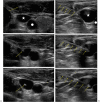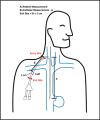Update on Insertion and Complications of Central Venous Catheters for Hemodialysis
- PMID: 27011425
- PMCID: PMC4803506
- DOI: 10.1055/s-0036-1572547
Update on Insertion and Complications of Central Venous Catheters for Hemodialysis
Abstract
Central venous catheters are a popular choice for the initiation of hemodialysis or for bridging between different types of access. Despite this, they have many drawbacks including a high morbidity from thrombosis and infection. Advances in technology have allowed placement of these lines relatively safely, and national guidelines have been established to help prevent complications. There is an established algorithm for location and technique for placement that minimizes harm to the patient; however, there are significant short- and long-term complications that proceduralists who place catheters should be able to recognize and manage. This review covers insertion and complications of central venous catheters for hemodialysis, and the social and economic impact of the use of catheters for initiating dialysis is reviewed.
Keywords: central venous catheters; complications; hemodialysis; techniques.
Figures



References
-
- KDOQI 2006 Updates Clinical Practice Guidelines Blood Press; 2006;33(5) - PubMed
-
- Ash S R. Fluid mechanics and clinical success of central venous catheters for dialysis—answers to simple but persisting problems. Semin Dial. 2007;20(3):237–256. - PubMed
-
- Kakkos S K, Haddad G K, Haddad R K, Scully M M. Effectiveness of a new tunneled catheter in preventing catheter malfunction: a comparative study. J Vasc Interv Radiol. 2008;19(7):1018–1026. - PubMed
Publication types
LinkOut - more resources
Full Text Sources
Other Literature Sources

